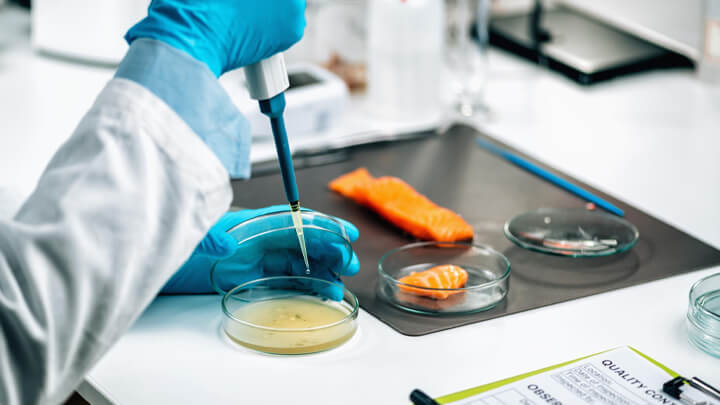
In today’s world, food and beverage safety is of paramount importance.
With the increasing complexity of supply chains and the rising demand for processed and packaged foods, ensuring the safety of consumables has become a critical responsibility for manufacturers, regulators, and testing laboratories.
Food and beverage testing is a cornerstone of consumer safety, providing a scientific foundation to identify, evaluate, and eliminate potential hazards.
Understanding Food and Beverage Testing
Food and beverage testing involves a series of scientific analyses to assess the quality, safety, and authenticity of consumable products.
These tests cover a wide range of parameters, including microbial contamination, chemical residues, nutritional content, and allergen detection.
Testing is conducted at various stages of production—from raw material procurement to final product packaging—to ensure that food items meet regulatory standards and are safe for consumption.
Why Food and Beverage Testing Is Critical
- Preventing Contamination: Contamination, whether microbial, chemical, or physical, poses a significant threat to consumer health. Pathogens like Salmonella, Listeria, and E. coli can cause severe foodborne illnesses, while chemical contaminants such as pesticides and heavy metals may lead to long-term health issues. Testing ensures that harmful contaminants are identified and eliminated before products reach consumers.
- Meeting Regulatory Compliance: Regulatory bodies worldwide, such as the FDA in the United States, EFSA in Europe, and FSANZ in Australia, mandate strict standards for food safety. Food and beverage testing ensures that products comply with these regulations, avoiding costly recalls, legal penalties, and damage to brand reputation.
- Detecting Allergens: For individuals with food allergies, consuming even trace amounts of allergens can have life-threatening consequences. Testing helps manufacturers detect and label allergens accurately, protecting consumers from accidental exposure.
- Ensuring Nutritional Accuracy: Consumers rely on nutritional labels to make informed dietary choices. Food and beverage testing verifies the accuracy of nutritional claims, building consumer trust and enabling adherence to labeling laws.
- Preventing Economic Fraud: Adulteration and mislabeling are common practices in the food industry. Testing can detect instances of economic fraud, such as the dilution of expensive ingredients or the substitution of one ingredient for another. This safeguards both consumer interests and brand integrity.
Types of Food and Beverage Testing
- Microbiological Testing: This testing identifies harmful microorganisms that can cause spoilage or illness. Common tests include the detection of pathogens, spoilage organisms, and indicators of hygiene.
- Chemical Testing: Chemical analyses are performed to detect residues of pesticides, antibiotics, and heavy metals, as well as to assess the presence of food additives and preservatives.
- Nutritional Testing: This testing verifies the levels of macronutrients (like proteins, fats, and carbohydrates), vitamins, and minerals to ensure that nutritional claims on labels are accurate.
- Allergen Testing: Allergen testing is essential for detecting potential allergens such as peanuts, gluten, and shellfish, helping manufacturers provide clear warnings on packaging.
- Shelf Life Testing: This testing determines how long a product maintains its safety and quality under specific storage conditions, aiding in the accurate determination of expiration dates.
The Role of Advanced Technology
The field of food and beverage testing has witnessed significant advancements in technology, enhancing both efficiency and accuracy.
Techniques like High-Performance Liquid Chromatography (HPLC), Polymerase Chain Reaction (PCR), and Mass Spectrometry have revolutionized the industry, enabling rapid and precise detection of contaminants and other quality parameters.
These tools allow for the identification of even minute traces of harmful substances, ensuring the highest levels of safety.
Real-World Impact of Testing
Food and beverage testing has played a pivotal role in averting large-scale public health crises.
For example, in cases where contamination was identified early, manufacturers have been able to issue timely recalls, preventing widespread illnesses.
Such testing also bolsters consumer confidence, as they can trust that the products they purchase have undergone rigorous quality checks.
Challenges in Food and Beverage Testing
Despite its importance, food and beverage testing faces several challenges:
- Complex Supply Chains: Globalized supply chains make traceability and consistent quality assurance difficult.
- Cost Pressures: Comprehensive testing can be expensive, particularly for small and medium-sized enterprises (SMEs).
- Evolving Contaminants: The emergence of new contaminants and foodborne pathogens requires constant updates to testing methodologies.
Conclusion
Food and beverage testing is not just a regulatory requirement but a fundamental component of consumer safety and public health.
It protects consumers from health risks, ensures compliance with laws, and upholds the integrity of food brands.
As the industry continues to evolve, the integration of advanced technologies and robust testing protocols will be essential to meet emerging challenges and maintain high safety standards.
Ultimately, food and beverage testing empowers both manufacturers and consumers, fostering a safer and more trustworthy food supply chain.





Leave a Reply